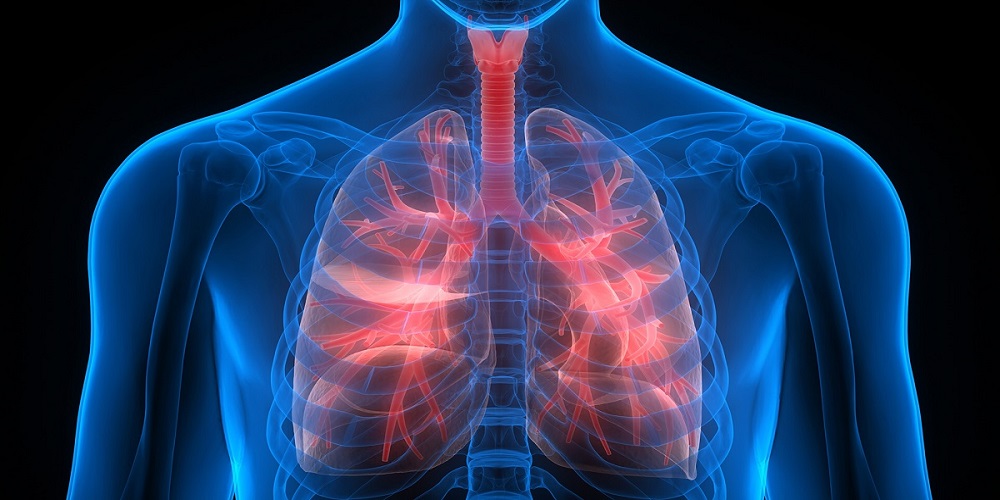A PHP Error was encountered
Severity: Notice
Message: Undefined index: start_date
Filename: blocks/page-banner.php
Line Number: 31
Backtrace:
File: /var/www/html/application/modules/webinars/views/blocks/page-banner.php
Line: 31
Function: _error_handler
File: /var/www/html/application/third_party/MX/Loader.php
Line: 364
Function: include
File: /var/www/html/application/third_party/MX/Loader.php
Line: 306
Function: _ci_load
File: /var/www/html/application/core/MY_Loader.php
Line: 121
Function: view
File: /var/www/html/application/modules/webinars/controllers/Home.php
Line: 40
Function: webinar_template
File: /var/www/html/index.php
Line: 317
Function: require_once
A PHP Error was encountered
Severity: Notice
Message: Undefined index: end_date
Filename: blocks/page-banner.php
Line Number: 32
Backtrace:
File: /var/www/html/application/modules/webinars/views/blocks/page-banner.php
Line: 32
Function: _error_handler
File: /var/www/html/application/third_party/MX/Loader.php
Line: 364
Function: include
File: /var/www/html/application/third_party/MX/Loader.php
Line: 306
Function: _ci_load
File: /var/www/html/application/core/MY_Loader.php
Line: 121
Function: view
File: /var/www/html/application/modules/webinars/controllers/Home.php
Line: 40
Function: webinar_template
File: /var/www/html/index.php
Line: 317
Function: require_once
A PHP Error was encountered
Severity: Notice
Message: Undefined index: start_date
Filename: blocks/page-banner.php
Line Number: 39
Backtrace:
File: /var/www/html/application/modules/webinars/views/blocks/page-banner.php
Line: 39
Function: _error_handler
File: /var/www/html/application/third_party/MX/Loader.php
Line: 364
Function: include
File: /var/www/html/application/third_party/MX/Loader.php
Line: 306
Function: _ci_load
File: /var/www/html/application/core/MY_Loader.php
Line: 121
Function: view
File: /var/www/html/application/modules/webinars/controllers/Home.php
Line: 40
Function: webinar_template
File: /var/www/html/index.php
Line: 317
Function: require_once
A PHP Error was encountered
Severity: Notice
Message: Undefined index: city_name
Filename: blocks/page-banner.php
Line Number: 42
Backtrace:
File: /var/www/html/application/modules/webinars/views/blocks/page-banner.php
Line: 42
Function: _error_handler
File: /var/www/html/application/third_party/MX/Loader.php
Line: 364
Function: include
File: /var/www/html/application/third_party/MX/Loader.php
Line: 306
Function: _ci_load
File: /var/www/html/application/core/MY_Loader.php
Line: 121
Function: view
File: /var/www/html/application/modules/webinars/controllers/Home.php
Line: 40
Function: webinar_template
File: /var/www/html/index.php
Line: 317
Function: require_once
A PHP Error was encountered
Severity: Notice
Message: Undefined index: country_name
Filename: blocks/page-banner.php
Line Number: 42
Backtrace:
File: /var/www/html/application/modules/webinars/views/blocks/page-banner.php
Line: 42
Function: _error_handler
File: /var/www/html/application/third_party/MX/Loader.php
Line: 364
Function: include
File: /var/www/html/application/third_party/MX/Loader.php
Line: 306
Function: _ci_load
File: /var/www/html/application/core/MY_Loader.php
Line: 121
Function: view
File: /var/www/html/application/modules/webinars/controllers/Home.php
Line: 40
Function: webinar_template
File: /var/www/html/index.php
Line: 317
Function: require_once
A PHP Error was encountered
Severity: Notice
Message: Undefined index: pre_title
Filename: blocks/page-banner.php
Line Number: 44
Backtrace:
File: /var/www/html/application/modules/webinars/views/blocks/page-banner.php
Line: 44
Function: _error_handler
File: /var/www/html/application/third_party/MX/Loader.php
Line: 364
Function: include
File: /var/www/html/application/third_party/MX/Loader.php
Line: 306
Function: _ci_load
File: /var/www/html/application/core/MY_Loader.php
Line: 121
Function: view
File: /var/www/html/application/modules/webinars/controllers/Home.php
Line: 40
Function: webinar_template
File: /var/www/html/index.php
Line: 317
Function: require_once
A PHP Error was encountered
Severity: Notice
Message: Undefined index: main_title
Filename: blocks/page-banner.php
Line Number: 45
Backtrace:
File: /var/www/html/application/modules/webinars/views/blocks/page-banner.php
Line: 45
Function: _error_handler
File: /var/www/html/application/third_party/MX/Loader.php
Line: 364
Function: include
File: /var/www/html/application/third_party/MX/Loader.php
Line: 306
Function: _ci_load
File: /var/www/html/application/core/MY_Loader.php
Line: 121
Function: view
File: /var/www/html/application/modules/webinars/controllers/Home.php
Line: 40
Function: webinar_template
File: /var/www/html/index.php
Line: 317
Function: require_once
A PHP Error was encountered
Severity: Notice
Message: Undefined index: main_title
Filename: blocks/page-banner.php
Line Number: 45
Backtrace:
File: /var/www/html/application/modules/webinars/views/blocks/page-banner.php
Line: 45
Function: _error_handler
File: /var/www/html/application/third_party/MX/Loader.php
Line: 364
Function: include
File: /var/www/html/application/third_party/MX/Loader.php
Line: 306
Function: _ci_load
File: /var/www/html/application/core/MY_Loader.php
Line: 121
Function: view
File: /var/www/html/application/modules/webinars/controllers/Home.php
Line: 40
Function: webinar_template
File: /var/www/html/index.php
Line: 317
Function: require_once
- Home -

A PHP Error was encountered
Severity: Notice
Message: Undefined index: start_date
Filename: blocks/slider.php
Line Number: 20
Backtrace:
File: /var/www/html/application/modules/webinars/views/blocks/slider.php
Line: 20
Function: _error_handler
File: /var/www/html/application/third_party/MX/Loader.php
Line: 364
Function: include
File: /var/www/html/application/third_party/MX/Loader.php
Line: 306
Function: _ci_load
File: /var/www/html/application/modules/webinars/views/index/index.php
Line: 1
Function: view
File: /var/www/html/application/third_party/MX/Loader.php
Line: 364
Function: include
File: /var/www/html/application/third_party/MX/Loader.php
Line: 306
Function: _ci_load
File: /var/www/html/application/core/MY_Loader.php
Line: 122
Function: view
File: /var/www/html/application/modules/webinars/controllers/Home.php
Line: 40
Function: webinar_template
File: /var/www/html/index.php
Line: 317
Function: require_once
A PHP Error was encountered
Severity: Notice
Message: Undefined index: end_date
Filename: blocks/slider.php
Line Number: 21
Backtrace:
File: /var/www/html/application/modules/webinars/views/blocks/slider.php
Line: 21
Function: _error_handler
File: /var/www/html/application/third_party/MX/Loader.php
Line: 364
Function: include
File: /var/www/html/application/third_party/MX/Loader.php
Line: 306
Function: _ci_load
File: /var/www/html/application/modules/webinars/views/index/index.php
Line: 1
Function: view
File: /var/www/html/application/third_party/MX/Loader.php
Line: 364
Function: include
File: /var/www/html/application/third_party/MX/Loader.php
Line: 306
Function: _ci_load
File: /var/www/html/application/core/MY_Loader.php
Line: 122
Function: view
File: /var/www/html/application/modules/webinars/controllers/Home.php
Line: 40
Function: webinar_template
File: /var/www/html/index.php
Line: 317
Function: require_once
A PHP Error was encountered
Severity: Notice
Message: Undefined index: start_date
Filename: blocks/slider.php
Line Number: 28
Backtrace:
File: /var/www/html/application/modules/webinars/views/blocks/slider.php
Line: 28
Function: _error_handler
File: /var/www/html/application/third_party/MX/Loader.php
Line: 364
Function: include
File: /var/www/html/application/third_party/MX/Loader.php
Line: 306
Function: _ci_load
File: /var/www/html/application/modules/webinars/views/index/index.php
Line: 1
Function: view
File: /var/www/html/application/third_party/MX/Loader.php
Line: 364
Function: include
File: /var/www/html/application/third_party/MX/Loader.php
Line: 306
Function: _ci_load
File: /var/www/html/application/core/MY_Loader.php
Line: 122
Function: view
File: /var/www/html/application/modules/webinars/controllers/Home.php
Line: 40
Function: webinar_template
File: /var/www/html/index.php
Line: 317
Function: require_once
A PHP Error was encountered
Severity: Notice
Message: Undefined index: pre_title
Filename: blocks/slider.php
Line Number: 116
Backtrace:
File: /var/www/html/application/modules/webinars/views/blocks/slider.php
Line: 116
Function: _error_handler
File: /var/www/html/application/third_party/MX/Loader.php
Line: 364
Function: include
File: /var/www/html/application/third_party/MX/Loader.php
Line: 306
Function: _ci_load
File: /var/www/html/application/modules/webinars/views/index/index.php
Line: 1
Function: view
File: /var/www/html/application/third_party/MX/Loader.php
Line: 364
Function: include
File: /var/www/html/application/third_party/MX/Loader.php
Line: 306
Function: _ci_load
File: /var/www/html/application/core/MY_Loader.php
Line: 122
Function: view
File: /var/www/html/application/modules/webinars/controllers/Home.php
Line: 40
Function: webinar_template
File: /var/www/html/index.php
Line: 317
Function: require_once
A PHP Error was encountered
Severity: Notice
Message: Undefined index: main_title
Filename: blocks/slider.php
Line Number: 117
Backtrace:
File: /var/www/html/application/modules/webinars/views/blocks/slider.php
Line: 117
Function: _error_handler
File: /var/www/html/application/third_party/MX/Loader.php
Line: 364
Function: include
File: /var/www/html/application/third_party/MX/Loader.php
Line: 306
Function: _ci_load
File: /var/www/html/application/modules/webinars/views/index/index.php
Line: 1
Function: view
File: /var/www/html/application/third_party/MX/Loader.php
Line: 364
Function: include
File: /var/www/html/application/third_party/MX/Loader.php
Line: 306
Function: _ci_load
File: /var/www/html/application/core/MY_Loader.php
Line: 122
Function: view
File: /var/www/html/application/modules/webinars/controllers/Home.php
Line: 40
Function: webinar_template
File: /var/www/html/index.php
Line: 317
Function: require_once
“
A PHP Error was encountered
Severity: Notice
Message: Undefined index: main_title
Filename: blocks/slider.php
Line Number: 117
Backtrace:
File: /var/www/html/application/modules/webinars/views/blocks/slider.php
Line: 117
Function: _error_handler
File: /var/www/html/application/third_party/MX/Loader.php
Line: 364
Function: include
File: /var/www/html/application/third_party/MX/Loader.php
Line: 306
Function: _ci_load
File: /var/www/html/application/modules/webinars/views/index/index.php
Line: 1
Function: view
File: /var/www/html/application/third_party/MX/Loader.php
Line: 364
Function: include
File: /var/www/html/application/third_party/MX/Loader.php
Line: 306
Function: _ci_load
File: /var/www/html/application/core/MY_Loader.php
Line: 122
Function: view
File: /var/www/html/application/modules/webinars/controllers/Home.php
Line: 40
Function: webinar_template
File: /var/www/html/index.php
Line: 317
Function: require_once
A PHP Error was encountered
Severity: Notice
Message: Undefined index: theme
Filename: blocks/slider.php
Line Number: 118
Backtrace:
File: /var/www/html/application/modules/webinars/views/blocks/slider.php
Line: 118
Function: _error_handler
File: /var/www/html/application/third_party/MX/Loader.php
Line: 364
Function: include
File: /var/www/html/application/third_party/MX/Loader.php
Line: 306
Function: _ci_load
File: /var/www/html/application/modules/webinars/views/index/index.php
Line: 1
Function: view
File: /var/www/html/application/third_party/MX/Loader.php
Line: 364
Function: include
File: /var/www/html/application/third_party/MX/Loader.php
Line: 306
Function: _ci_load
File: /var/www/html/application/core/MY_Loader.php
Line: 122
Function: view
File: /var/www/html/application/modules/webinars/controllers/Home.php
Line: 40
Function: webinar_template
File: /var/www/html/index.php
Line: 317
Function: require_once
A PHP Error was encountered
Severity: Notice
Message: Undefined index: cme
Filename: blocks/slider.php
Line Number: 126
Backtrace:
File: /var/www/html/application/modules/webinars/views/blocks/slider.php
Line: 126
Function: _error_handler
File: /var/www/html/application/third_party/MX/Loader.php
Line: 364
Function: include
File: /var/www/html/application/third_party/MX/Loader.php
Line: 306
Function: _ci_load
File: /var/www/html/application/modules/webinars/views/index/index.php
Line: 1
Function: view
File: /var/www/html/application/third_party/MX/Loader.php
Line: 364
Function: include
File: /var/www/html/application/third_party/MX/Loader.php
Line: 306
Function: _ci_load
File: /var/www/html/application/core/MY_Loader.php
Line: 122
Function: view
File: /var/www/html/application/modules/webinars/controllers/Home.php
Line: 40
Function: webinar_template
File: /var/www/html/index.php
Line: 317
Function: require_once
A PHP Error was encountered
Severity: Notice
Message: Undefined index: cpd
Filename: blocks/slider.php
Line Number: 126
Backtrace:
File: /var/www/html/application/modules/webinars/views/blocks/slider.php
Line: 126
Function: _error_handler
File: /var/www/html/application/third_party/MX/Loader.php
Line: 364
Function: include
File: /var/www/html/application/third_party/MX/Loader.php
Line: 306
Function: _ci_load
File: /var/www/html/application/modules/webinars/views/index/index.php
Line: 1
Function: view
File: /var/www/html/application/third_party/MX/Loader.php
Line: 364
Function: include
File: /var/www/html/application/third_party/MX/Loader.php
Line: 306
Function: _ci_load
File: /var/www/html/application/core/MY_Loader.php
Line: 122
Function: view
File: /var/www/html/application/modules/webinars/controllers/Home.php
Line: 40
Function: webinar_template
File: /var/www/html/index.php
Line: 317
Function: require_once
A PHP Error was encountered
Severity: Notice
Message: Undefined index: cne
Filename: blocks/slider.php
Line Number: 126
Backtrace:
File: /var/www/html/application/modules/webinars/views/blocks/slider.php
Line: 126
Function: _error_handler
File: /var/www/html/application/third_party/MX/Loader.php
Line: 364
Function: include
File: /var/www/html/application/third_party/MX/Loader.php
Line: 306
Function: _ci_load
File: /var/www/html/application/modules/webinars/views/index/index.php
Line: 1
Function: view
File: /var/www/html/application/third_party/MX/Loader.php
Line: 364
Function: include
File: /var/www/html/application/third_party/MX/Loader.php
Line: 306
Function: _ci_load
File: /var/www/html/application/core/MY_Loader.php
Line: 122
Function: view
File: /var/www/html/application/modules/webinars/controllers/Home.php
Line: 40
Function: webinar_template
File: /var/www/html/index.php
Line: 317
Function: require_once
Briefly Know About This Event
2nd Webinar on Pulmonology and Respiratory Medicine will be hosted on September 10, 2020 at 09:00 AM (GMT). Panel of speakers will be delivering their presentations on their recent research related to Pulmonology and Respiratory Medicine. Current state of knowledge, its impact on future will be discussed in detailed. Longdom invites all experts to be part this webinar series and make it a perfect platform for knowledge sharing and networking.








